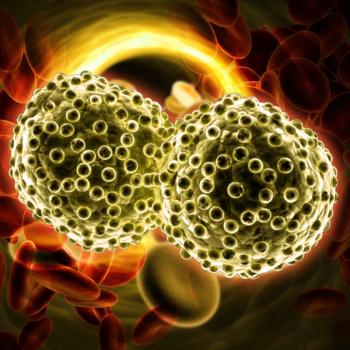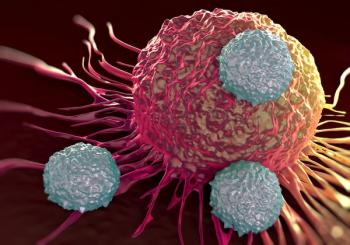
Oncology NEWS International
- Oncology NEWS International Vol 7 No 3
- Volume 7
- Issue 3
Cancer Pain Treatment Requires Clear Terminology About ‘Addiction’
NEW YORK--Today’s physician must be aware of the nuances among the terms tolerance, physical dependence, and addiction in order to treat cancer pain effectively, said Russell K. Portenoy, MD, chairman of the Department of Pain Medicine and Palliative Care, Beth Israel Medical Center, New York.
NEW YORK--Todays physician must be aware of the nuances among the terms tolerance, physical dependence, and addiction in order to treat cancer pain effectively, said Russell K. Portenoy, MD, chairman of the Department of Pain Medicine and Palliative Care, Beth Israel Medical Center, New York.
Thorough and effective pain management goes hand-in-hand with an accurate use of these terms, he said at the Second Conference on Pain Management and Chemical Dependency (see table).
"The mislabeling of patients is a difficult problem in pain management, and diagnoses of phenomena related to substance use must be clearly made and appropriately applied in clinical practice," Dr. Portenoy said. He stressed the importance of using a uniform nomenclature when physicians, nurses, and allied specialists treat patients with pain-relieving medications like opioids.
Terms like "addict," "hooked," and "dependent" can stigmatize a patient if haphazardly used, he said. These descriptors can imply that a patient taking prescribed opioid drugs for legitimate medical reasons is abusing the drugs and acting in ways associated with illicit drug use.
In an interview with Oncology News International, Dr. Portenoy said that 40% of patients with AIDS contracted the HIV virus through addictive behaviors and chemical dependence. Treating AIDS-related malignancies in these patients poses a significant challenge to the oncologist, who must be able to assess for possible addiction.
"Providing palliative care to this patient population necessitates understanding the patients relationship to the drugs they are taking, to their families, and to the community," he said.
Dr. Portenoy explained that physical dependence on opioids is common among patients with severe pain, ie, patients suffer withdrawal symptoms when the drug is stopped or the dosage reduced. "Physical dependence may happen within a few days of dosing," he said, adding that such dependence is highly variable among patients and does not pose a clinical danger unless the patient runs out of medication. "Maintaining the drug, or tapering the dosage, will prevent any deleterious clinical events from occurring," he said.
In addition, the difference between addiction and tolerance must be clear. "Addiction is not tolerance," he said. "Addiction is a psychological and behavioral syndrome," he said. "Tolerance is a variable pharmacologic property."
Tolerance to nonanalgesic effects is common, he said, while the loss of analgesia due to significant tolerance to analgesia is rare. "Tolerance is not needed to diagnose addiction," he added.
Opioid Responsiveness
Each patient requires individualized dosing for correct pain management, and the need for dosing changes cannot be explained by one phenomenon, like tolerance, Dr. Portenoy said. To more accurately discuss how an individual reacts to a drug, and to help avoid the ambiguity associated with terms like addiction, the term "opioid responsiveness" has been proposed.
"Opioid responsiveness is the degree of analgesia obtained at a maximally tolerated dose, ie, a dose just below that associated with intolerable and unmanageable side effects. If, upon dose titration, a patient can achieve a favorable balance between analgesia and side effects, the patient is said to be responsive. However, if the dose is escalated and side effects supervene, then the patient is poorly responsive," Dr. Portenoy said.
Given the differing mechanisms for pain (eg, nociceptive or neuropathic), he said that an opioid response should be viewed as dynamic. For cancer patients, there may be increasing pain or a shift from nociceptive pain to neuropathic pain as a tumor invades nerve tissue. "Therapies for pain treatment must constantly be assessed as part of the palliative care designed to help patients live with their cancer pain or to have as good end-of-life care as possible," he said.
Dr. Portenoy added that it is no longer acceptable to view end-of-life care and pain management separately. "Unifying these treatments as a complete palliative care approach will provide the most benefit for all patients," he said.
Articles in this issue
almost 28 years ago
ACS Takes Aim at Proposed Federal Tobacco Billsalmost 28 years ago
Loan Defaults Disqualify 1,402almost 28 years ago
FDA Gives OK to Seven New Cancer Drugs in 1997almost 28 years ago
HIA Chemo Promising in Colon Cancer Liver Metsalmost 28 years ago
Proposed Budget Spells ‘Good News’ for NCIalmost 28 years ago
Proposed Budget Has Extra Funds for FDA Teen Smoking Effortalmost 28 years ago
CRFA Awards 16 New Grants and Fellowshipsalmost 28 years ago
‘Staging’ of the Managed Care Market Is Crucialalmost 28 years ago
NCI, EPA Attempt to Resolve Differences Over Childhood Canceralmost 28 years ago
IGF-1 Identified as Possible Risk Factor For Prostate CancerNewsletter
Stay up to date on recent advances in the multidisciplinary approach to cancer.
































































































